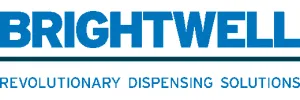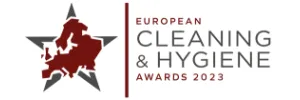News & Insights
Read the latest news from us and our clients across the globe

Posted on 30 October 2013 by adtrak.admin
Sustaining surfaces in tip top condition
Flooring is a crucial element in healthcare settings, so choosing the most appropriate materials, and employing the correct cleaning methods, is an essential task for all healthcare estate managers, as Lesley Davis from Truvox International explains.
There are certain things in life that we can steer clear of, thanks to free will, but contact with healthcare professionals is something that none of us can avoid. Whether it’s a trip to the dentist, a routine operation, or a visit to a residential home to see an elderly relative, everyone’s life is punctuated, at one level or another, with regular visits to healthcare settings. This puts healthcare firmly under the microscope in terms of public, political and media attention – and the cleaning of healthcare facilities is inextricably linked to the levels of clinical care provided, and perceptions surrounding service delivery.
Flooring thus has a lot to live up to when it comes to healthcare environments, in fact it’s hard to think of any other locations where floor surfaces are expected to deliver so much.
Harsh treatment
Flooring materials have to withstand some extremely harsh treatment, not just from the constant heavy footfall of people working in, visiting or using the facilities, but also through the movement of equipment such as beds, trolleys and various items of medical machinery. It’s expected to provide a safe environment for staff, patients and visitors, minimising the risks of slips and trips, but cushioning and protecting them from serious injury if the worst happens. And with staff spending a significant part of, sometimes long, shifts on their feet, flooring is also expected to deliver an ergonomic surface that can help to ease repetitive stresses and strains.
A facility manager’s wish list doesn’t stop there, though. Hospital flooring needs to be long-lasting, easy to clean and maintain, and help prevent the spread of infections. There is also an emerging desire to make hospitals seem less institutional, and to provide a more welcoming environment, so decorative qualities are another important consideration. It also needs to have proven ‘green’, sustainable credentials – and all the above needs to be delivered in the most cost effective way possible. Although this may sound like a huge task, specific research, technological developments, and a commitment from hospital trusts, facility managers, and manufacturers of flooring and cleaning equipment are all helping to deliver improved performance and results.
Design with safety in mind
When designing a new healthcare facility, or extending or refurbishing an established site, the Department of Health (DH) advises that all finishes should be chosen with cleaning in mind, especially where contamination with blood or bodily fluid, which could lead to the spread of healthcare-acquired infections (HAIs), is a possibility. Infection prevention and control (IPC) teams can be a useful ally in this regard, using their expertise and knowledge to advise on the most suitable surfaces and finishes to install.
The DH recommends using finishes that are impervious, smooth and seamless, and slip and wear resistant, especially in clinical areas. Threshold matting, placed at all external entrances can help to capture excess dirt before people enter the facility, assisting the cleaning efforts of operatives on site. Further guidance includes:
• Ensuring there is coving between the floor and the wall to prevent accumulation of dust and dirt in corners and crevices.
• Joints should be welded or sealed to prevent accumulation of dirt and damage due to water ingress.
• In areas where frequent wet cleaning methods are employed, floors should be made of a material that is unaffected by the agents likely to be used.
• Floors that are particularly subject to traffic when wet, such as those in bathrooms and kitchens, should have a slip-resistant surface, but be easily cleaned.
Difficult-to-clean materials
Wood or flooring with unsealed joints is difficult to keep clean and should be avoided, and carpets should not be used in clinical areas, or any other places where frequent spillages can occur.
This is because carpets that have been soiled by bodily fluids, such as faeces or vomit, are extremely difficult to disinfect. If soiling does occur, carpets should be cleaned with detergent and warm water, and then steam cleaned. Vacuuming carpets with conventional machines has the potential to recirculate micro-organisms and pathogens back into the atmosphere, so the use of separate ducted systems or HEPA-filtered devices should be considered for carpeted areas.
Although in the minority, carpet is still used in certain locations, such as counselling suites, consulting rooms, or family/visitor rooms, as it provides a more ‘homely’ feel. However, if carpet is to be used, facility managers should ensure that a documented local risk assessment is carried out, in consultation with IPC teams, and a clearly defined pre-planned preventative maintenance and cleaning programme is put in place.
The importance of infection prevention
Our 24-7 social media age means that all services – whether public or privately provided – are subject to constant scrutiny and comment. The health service is especially susceptible to this, with seemingly not a day or week going by without another inquiry, scandal or story making the headlines. A great many of these are linked to the standards of care provided, so ensuring that facilities both look clean on the surface, and reach the required hygiene standards, goes a long way to addressing public perceptions, and helping to prevent the spread of infections.
Controlling the spread of infections or viruses is vitally important in many different locations and settings – such as schools, leisure centres and the workplace – but it is even more crucial for healthcare providers. People visiting or receiving treatment in these environments are already vulnerable to the spread of infection, so making sure that effective cleaning regimes are in place for waiting rooms, corridors, reception areas and wards is key. A clean and welcoming environment is also important from an aesthetic point of view, engendering feelings of well-being and trust in people who may be anxious or unwell.
According to the Department of Health: ‘HAIs cost the health service around £1 billion per year. In addition, evidence suggests that service users with an MRSA bacteraemium spend on average an additional 10 days in hospital, while those with C.difficile spend an additional 21 days in hospital. Reducing HAIs helps the NHS make the most of its resources and deliver more for its service users.’
Aiming for ‘ultimate hygiene’
The key to reducing the incidence of HAIs and cross contamination is to keep caring environments cleaned to a standard as near to ultimate hygiene as possible. In his foreword to the National Standards of cleanliness for the NHS (April 2001), the then Secretary of State for Health, Alan Milburn, said: “Good hospital care depends on getting the basics right: making sure that the food is good, the care is there, and the wards are clean.” This succinctly summarises the main points that need to be delivered on, to ensure that public confidence in the healthcare services remains solid.
The National Specifications for Cleanliness in the NHS, published by the National Patient Safety Agency in April 2007, expanded on the need to provide a clean and safe environment. It stated: ‘This key priority, coupled with increasing public concern about HAIs, means hospitals need to not only be clean but able to demonstrate how and to what standard they are kept clean.’
Keeping a healthcare environment clean is a constant battle, as there are so many opportunities for contamination and transmission. Hands, surfaces and airborne pathogens, mean that cleaning needs to be constant and meticulous. Infectious micro-organisms can enter the air by a variety of routes including sneezing, coughing, skin shedding, patient treatment, and activities such as bed-making. Organisms such as MRSA (Methicillin-resistant Staphylococcus aureus), Colstridium difficile spores, VRE (Vancomycin-resistant enterococci) and Acinetobacter can remain viable in the environment for months, and can have severe implications for patient safety. However, a number of studies* have shown that improved cleaning and disinfection of environmental surfaces can reduce the transmission of such pathogens.
Guarding against cross contamination
Infection control teams are increasingly requesting that neutral detergents and taurnine-based products are used to clean safety flooring – but these need to be applied by a machine to be truly effective. Operatives using conventional mops can’t put enough pressure on the floor to ensure total efficacy. Neutral detergents will only work effectively in a machine as they need the thoroughness provided by brush agitation. Brushes should be colour-coded to prevent cross contamination, and those made from materials such as poly-propylene don’t harbour bacteria like natural fibres, and are easy to disinfect. These are all crucial points to consider when selecting cleaning equipment, as are the speed and pressure at which brushes operate. Too much friction can cause burn marks to floors, so this aspect should be thoroughly researched before any purchasing decisions are made.
As well as ensuring all operatives are fully trained and equipped with the right equipment or machinery to clean each specific location, there are other ways they can contribute to preventing cross contamination, once cleaning has been completed. Micro-organisms thrive in warm, moist environments, and dust can enable them to become airborne, so the following steps should be followed with floor cleaning machines:
• After use, ensure all water tanks, both clean and dirty, are emptied
• Clean and rinse through both water tanks
• Clean and rinse squeegee assembly and blades
• Clean and rinse all hoses
• Leave all tanks open to air dry
• Wipe clean all outer surfaces
Slips, trips and sound issues
Slip and trip accidents are another great concern in healthcare setttings, with their potential to create significant extras cost for the NHS including lost time, additional care requirements, and financial claims from those who have been injured. This is especially important for the care of elderly patients, and the University of Portsmouth’s ‘Helping Injury Prevention in Hospitalised Older People’ study is currently researching whether shock-absorbent flooring may help.
Concerns from some NHS Trusts about the potential for the texture of slip resistant surfaces to adversely affect the hygienic cleaning of floors, prompted the Health and Safety Executive (HSE) to release its RR889 research report: Investigation of slip resistance and the hygienic cleaning of floors in hospital settings, in 2011.
The report concluded that the slip resistance of the floor covering was not a determining factor in the ability to clean the floor to a hygienic standard using conventional cleaning regimes. Therefore, the cleanability of the flooring should not be a barrier to the use of slip resistant flooring in foreseeably wet or contaminated work areas in hospitals.
By selecting battery-powered machines, with no trailing leads, and ones that have the ability to leave floors clean and dry in a single pass, facility managers can help to reduce the risks of slips and trips occurring. However, there are other, less obvious safety issues that also need to be considered, namely noise.
Noise – a known stressor
Noise can be an unwelcome irritation in all walks of life, but it can be especially upsetting for patients, who need a calm environment in which to receive treatment and recover. Thanks to our aging population more dementia suffers now require regular hospital care. Noise is a known stressor for people with dementia, and some people can become so hypersensitive to sound that they cannot focus on anything else until that sound is removed. This can also be the case with children. Children with autistic spectrum disorders – around 133,500 in the UK alone, according to the National Autistic Society – are among those that are noise sensitive. Cleaning machines that do their job efficiently, safely and quietly, are therefore preferable.
Using the optimal floor cleaning methods
It’s clear that healthcare flooring needs to possess a wide range of attributes – but selecting your surfacing materials is just the first step. Installing new flooring is an expensive business, especially so when healthcare budgets are under such enormous pressure, so the correct cleaning and maintenance methods can ensure that they remain viable for as long as possible. Improvements in service delivery, and the performance of hospital flooring, can be greatly enhanced through regular evaluation and assessment of existing regimes and equipment – enhancing the experience of patients, visitors and staff; and helping healthcare providers to deliver high quality services that are cost effective and safe.
To gain a clearer idea of the benefits of effective floor cleaning in a healthcare setting, let us consider two recent case studies.
Glasgow Royal Infirmary
The Glasgow Royal Infirmary (GRI) is a large teaching hospital, operated by NHS Greater Glasgow and Clyde. It provides a broad range of regional, supra-regional and national acute clinical services, and has over 70 wards. In addition, it has a busy accident and emergency department, including major treatment rooms for patients with serious injuries, a separate minor injuries unit and a resuscitation unit with six bays. Furthermore with two x-ray facilities all its floors require regular, effective cleaning by equipment that won’t let them down.
The Truvox Multiwash – a multi-purpose floor cleaning machine that washes, mops, scrubs and dries on both hard and soft floor coverings in one single pass – was selected for use after a number of demonstrations and product comparisons had taken place. Versatility was the key factor in the decision taken, as the machine could cope with all the different types of flooring surfaces found in the hospital – including reception areas, offices, wards, clinics, treatment rooms and canteens.
Margaret Scott, assistant domestic services manager at the GRI, reveals that the Multiwash has brought many different benefits in terms of ease of use for cleaning staff, and wider results for the hospital itself. “The rotary brushes are particularly effective for tiled floors as they get deep into the grout lines, and the Multiwash also helps us clean hygienically in quick time – something that is essential in the very busy labour ward birthing rooms.”
Horsham Hospital
Meanwhile, looking at experience of a healthcare facility in southern England, Horsham Hospital is a two-ward, 50-bedded community hospital, owned by West Sussex Health, and it has seen an increase in the use of safety flooring over recent years.
“We have had issues over the last few years with more and more safety flooring being installed,” explains the hospital’s facilities supervisor, Stephen Partlett. “This is tricky stuff to clean as our existing buffers tended to glide over the top. What we really needed was a machine that would ‘dig into’ the floor without damaging it, and remove the dirt rather than just spread it around.”
Quiet, manoeuvrable and effective
After various demonstrations, the Truvox Multiwash was chosen. It was primarily chosen for its quietness in operation, excellent manoeuvrability, and effectiveness on ‘difficult’ floors, including non-slip safety floors, low pile carpets, tiles and escalators.
Thanks to its contra-rotating brushes the machine exerts just the right amount of extra pressure needed to tackle grime in the grouting of tiled floors, as the bristles safely dig deep into porous tiles and grout lines, loosening and removing soils. As the brushes are so effective, it uses about 30 percent less water – which means less chemical – making it easy on the environment and the user. In addition, using less water means floors are dry in minutes, making the machine perfect for busy facilities like Horsham Hospital.
Stephen Partlett concludes: “The key benefit the Multiwash is delivering is a marked improvement in the patient environment. Hospital floors are very visual things. If they are seen to be dirty it gives a very negative perception of the cleanliness of the rest of the hospital.”
About the author
Lesley Davis is a Regional Area Manager for Truvox International, who has spent over 30 years working in the cleaning machinery and solutions industry, specialising in the supply of equipment to the healthcare sector.
She has vast experience working with the NHS in England, Ireland, Scotland and Wales, ensuring that differing audit procedures are adhered to, and hygiene standards achieved through the provision of the most appropriate and effective cleaning equipment.
She holds a university certificate in infection control, including cleaning and health and safety issues, and is currently working towards a university certificate in cleaning management.
She works closely with the Association of Healthcare Cleaning Professionals (AHCP), and with flooring manufacturers, to establish the best ways to clean different flooring surfaces.
References
Kaatz GW et al. Am J Epidemiol 1988;127:1289
Mayfield JL et al. Clin Infect Dis 2000;31:995
Hayden MK et al. Clin Infect Dis 2006;42:1552
Boyce JM et al. Infect Control Hosp Epidemiol 2008;29:723
Dancer SJ et al. BMC Med 2009;7.28
Published in Health Estate Journal – October, 2013
Experts in Public Relations Services & Communications Management
Our ServicesGenuine industry specialists in cleaning and hygiene, environmental and recycling, and facilities management
Our Sectors












